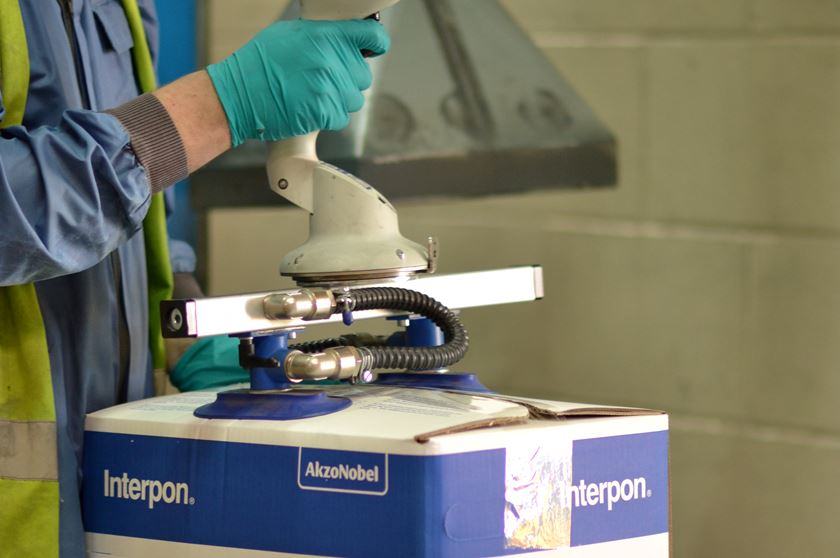Electrochemical Destruction of Perfluorooctanesulfonate in Electroplating Wastewaters: AESF Research Project #R-120, 6th Quarterly Report
This NASF-AESF Foundation research project focuses on an electrochemical, destructive treatment strategy for the remediation of relevant PFASs in electroplating wastewater, using a cost-effective reactive electrochemical membrane (REM) for the removal of PFAS. Work this 6th quarter focused on the electrochemical oxidation of poly- and perfluoroalkyl substances (PFAS) using a tubular Magnéli phase titanium sub-oxide (Ti4O7) reactive electrochemical membrane (REM).
#pollution control #nasf
by Brian Chaplin*
Department of Chemical Engineering
University of Illinois at Chicago
Chicago, Illinois, USA
Editor’s Note: This NASF-AESF Foundation research project report covers the sixth quarter of project work (July-September 2021) at the University of Illinois at Chicago. A printable PDF version of this report is available by clicking HERE.
Featured Content
Summary
Work this past quarter focused on the electrochemical oxidation of poly- and perfluoroalkyl substances (PFAS) using a tubular Magnéli phase titanium sub-oxide (Ti4O7) reactive electrochemical membrane (REM). The oxidation experiments were performed in synthetic solutions, using a crossflow setup in full recycle mode. The synthetic solutions were prepared by spiking perfluorooctane sulfonate (PFOS) to a background electrolyte with an ionic strength that was representative of industrial electroplating wastewaters (i.e., 240 mM NaClO4). The solution was subjected to electrochemical oxidation at a constant potential of 3.0 VSHE and as a function of the permeate flux. Results indicated that negligible removal was accomplished at a low permeate flux, but approximately 60% PFOS removal could be accomplished with less than a 2 min electrolysis time under high flux conditions. A mathematical reactive transport model was used to investigate the effect of flux as a function of REM reactivity at a given electrode to solution volume ratio. It was found that higher flux always outperformed lower flux conditions with regard to PFOS removal. Simulations also indicated that further improvements in reaction kinetics for PFOS destruction would have minimal impacts on removal under low flux conditions, but significant increases in overall removal at high flux conditions. Therefore, future work is focused on improving electrocatalytic activity for PFOS and other PFAS.
Electrochemical oxidation experiments
The operating conditions for the electrochemical oxidation experiments are shown in Table 1 and results are shown in Figure 1. PFOS oxidation experiments were conducted with 100% recycle of both the permeate and feed solutions. The applied anodic potential was 3.0 VSHE and permeate fluxes (J) of 60 and 1800 L m-2 hr-1 (LMH) were tested. Results show that negligible PFOS was removed at 60 LMH, while approximately 60% was removed at 1800 LMH. These results were attributed to the small amount of solution volume that was processed at the low flux conditions relative to the high flux conditions.

Table 1 - Operating parameters of PFAS oxidation experiments.

Figure 1 - PFOS oxidation results at 3.0 VSHE for permeate fluxes (J) of 60 and 1800 L m-2 hr-1 (LMH).
To further explore the effect of J on PFOS removal, a mathematical reactive transport model was used to estimate PFOS removal under different reactivity conditions at J = 60 and 800 LMH (Fig. 2). Results indicated that simulations at J = 800 LMH always resulted in more total PFOS removal than simulations at J = 60 LMH, even though single pass removals under J = 60 LMH were always higher (e.g., >90%). Results also indicated that increasing the PFOS oxidation rate constant from 0.3 to 5.0 min-1 did not significantly increase total PFOS removal in the recirculating feed tank at J = 60 LMH, due to the fact that conversion was already high under all conditions tested. However, at J = 1800 LMH total PFOS removal increased significantly, as single pass removals increased from 16% to 95% with increasing rate constant of 0.3 to 5.0 min-1, respectively. Future work will thus focus on evaluating REM properties to enhance PFAS reaction rates.

Figure 2 - Reactive transport modeling for PFOS oxidation as a function of J and reaction rate constant (k).
About the author

Dr. Brian P. Chaplin is Associate Professor in the Department of Chemical Engineering, at the University of Illinois at Chicago. He holds a B. Civil Engineering (1999) and an M.S. (2003) in Civil Engineering from the University of Minnesota and a Ph.D. in Environmental Engineering (2007) from the University of Illinois at Urbana-Champaign.
* Dr. Brian Chaplin, Associate Professor
Dept. of Chemical Engineering
University of Illinois at Chicago
221 Chemical Engineering Building
810 S. Clinton St.
Chicago, IL 60607
Office: (312) 996-0288
Mobile: (217) 369-5529
E-mail: chaplin@uic.edu
RELATED CONTENT
-
Better Alloy Control of Alkaline Zinc Nickel Baths
The factors that influence nickel content in deposits from alkaline non-cyanide zinc nickel baths.
-
8 Things You Need to Know About Paint Booth Lighting
Global Finishing Solutions has come up with some helpful insights on lighting for paints booths which plays a crucial role in achieving a quality paint job.
-
Pretreatments: The Next Generation
Emerging technologies can save energy, ease environmental concerns


















